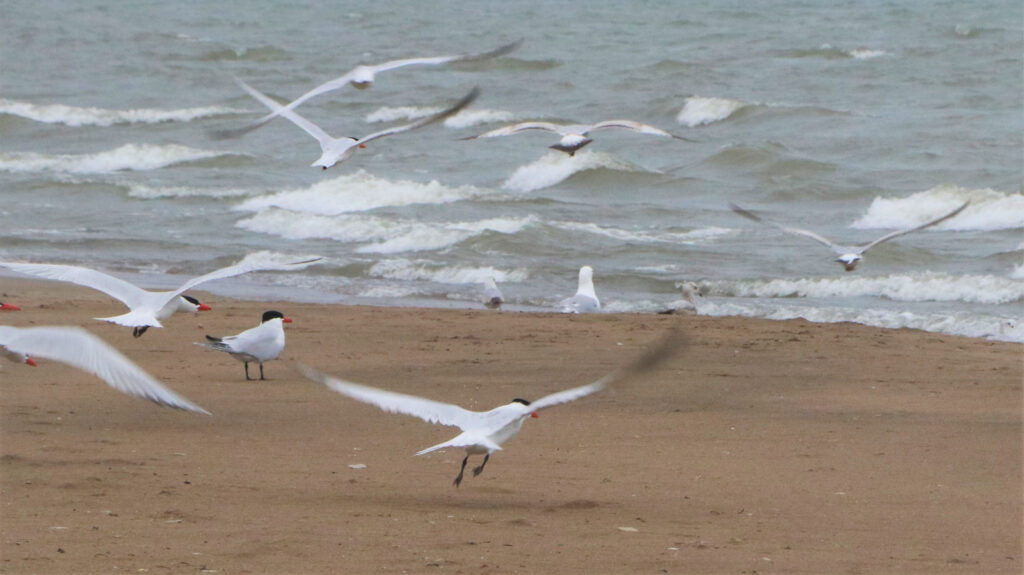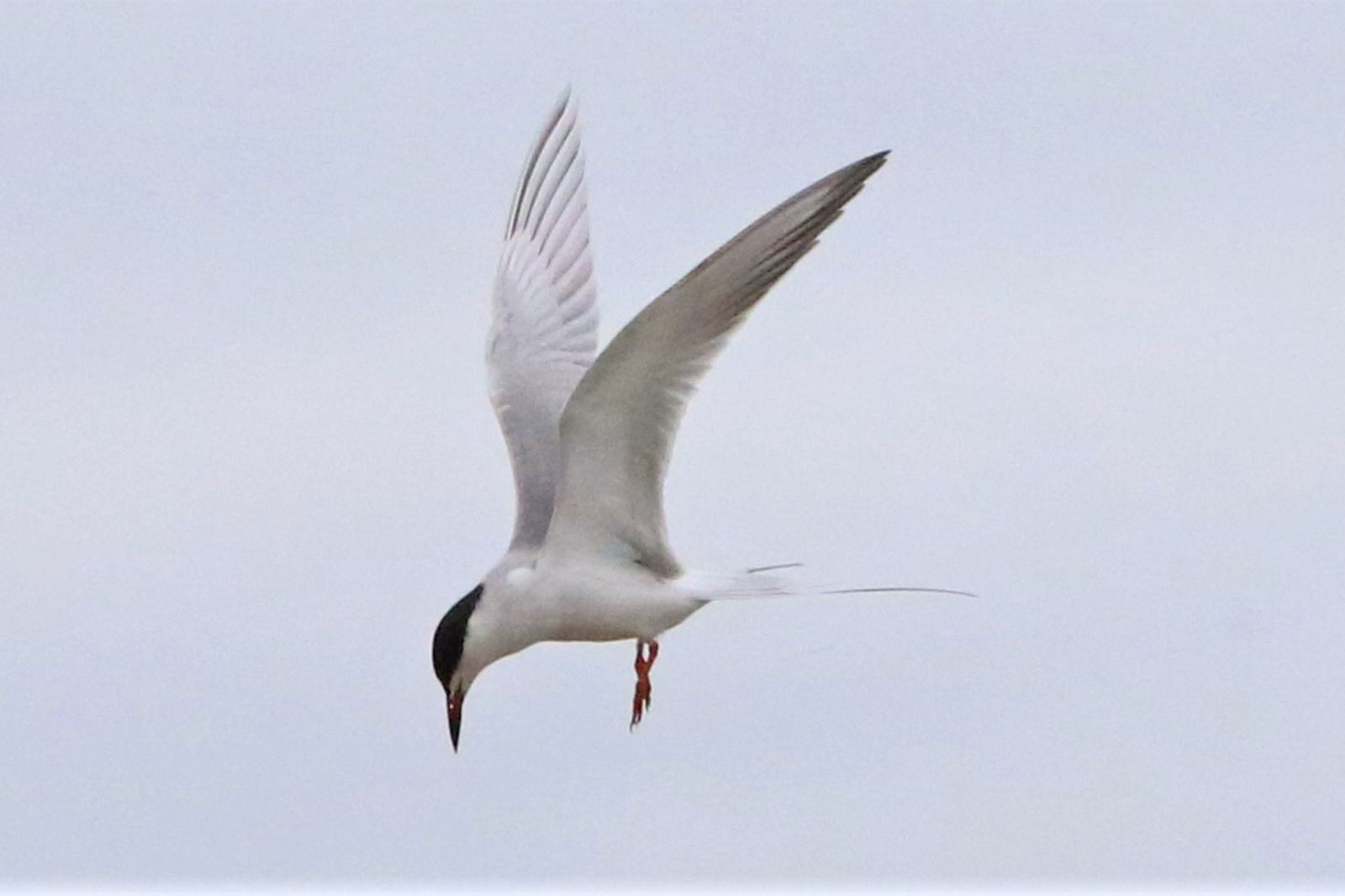Hello, everyone! Welcome back to another edition of Capturing Kenosha. I would like to introduce you to a bird that I discovered while visiting our harbor town last week. The bird is called a Caspian tern and it is an endangered species in Wisconsin.
I bet the last time you went to a Kenosha beach you probably saw a bunch of noisy seagulls. Have you ever taken the time to really look at them and distinguish their differences?
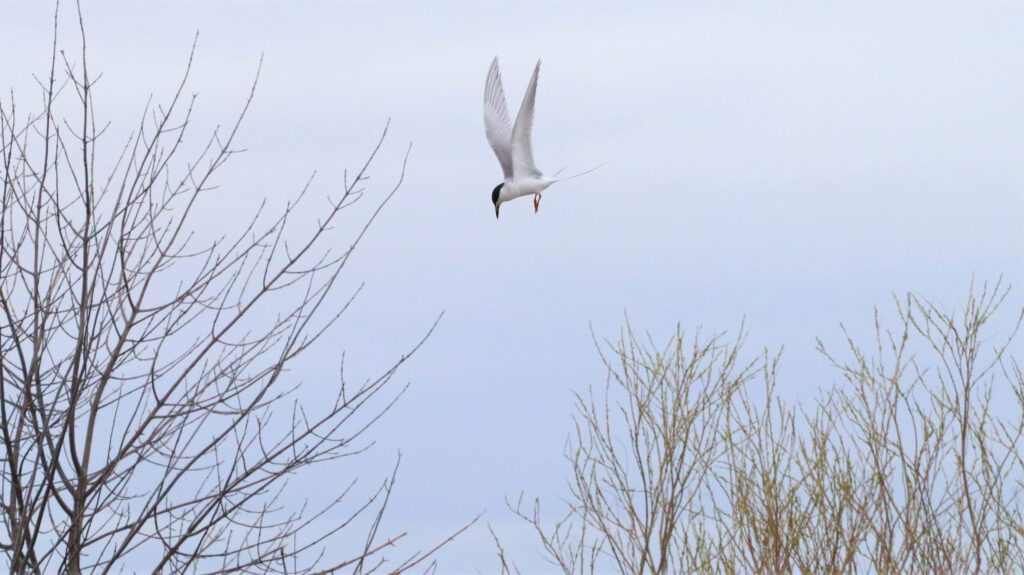
Being a photographer, I like to include them in my sunrise photos by trying to capture their images in just the right position against the sunrise skies. About a week ago, I noticed a couple of common terns feeding along the Pike River. At first, I thought they were some kind of seagull, but somehow they were different with their black capped heads and dusky gray wingbacks. I watched them for about a half an hour while they flew up and down the length of the river looking downward in search of a fat minnow.
I was amazed to watch as one of them in midflight suddenly put on the brakes and hovered in place before diving straight down into the water. It emerged with a small fish and immediately flew off with two other small terns in chase trying to take the fish from its beak. I found the birds very interesting and knew they were not common visitors to the Kenosha shores, so I decided to look them up to see what kind of birds they were.
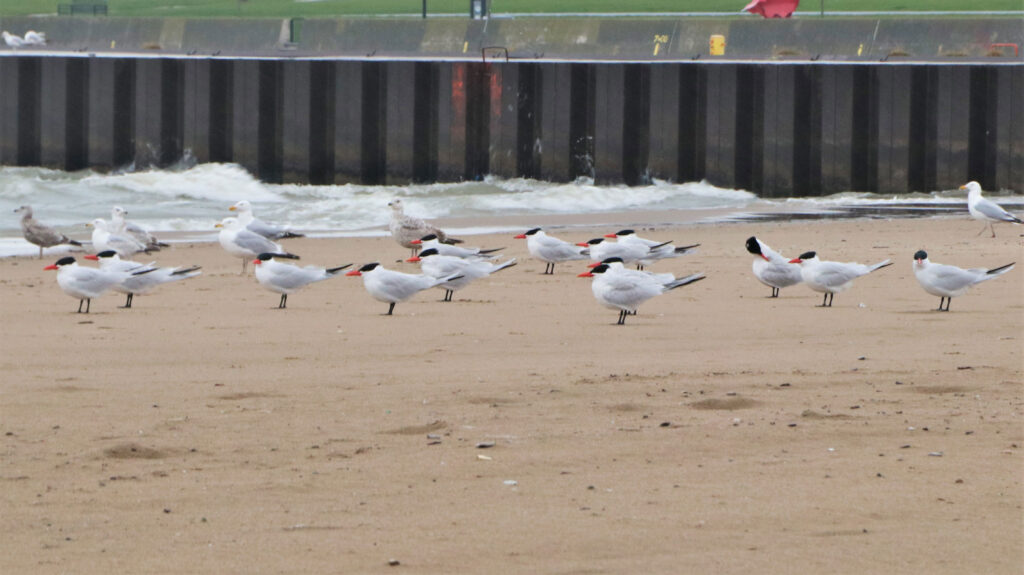
I actually thought they were a kind of seagull but soon found out that there is no such thing as a seagull. What most people refer to as seagulls are actually birds in the scientifically classified family called “Laridae.” The classification is a grouping of birds known as gulls and terns and all told there are more than 35 different species within the family.
Most species of gulls and terns are found over open water or on coastal habitats such as beaches and shorelines, which is how they earned the generic name “seagulls.” However, these birds can also be found in a variety of other habitats such as wetlands, lakes, farm fields, and even parking lots as we in Kenosha are well aware.
In my research I also discovered that the Great Lakes are rich in diversity when it comes to both gulls and terns. The terns are actually considered endangered due to human encroachment. Habitat loss, predators and chemical contamination have all threatened the birds recent years, but habitat loss is by far the greatest threat to their survival. The DNR and other public and private sector partners have been working for three decades to provide secure nesting habitats on two sites on Lake Superior where the terns migrate to breed.
I found out that the Great Lakes are rich in diversity of both gulls and terns due to the large number of rocky islands and shoals along with large coastal wetlands and areas that provide great nesting and feeding habitats for these species. I believe that the three terns I observed are simply known as common terns due to their smaller size. These terns migrate up the coastline this time of year towards breeding areas to the north of us.
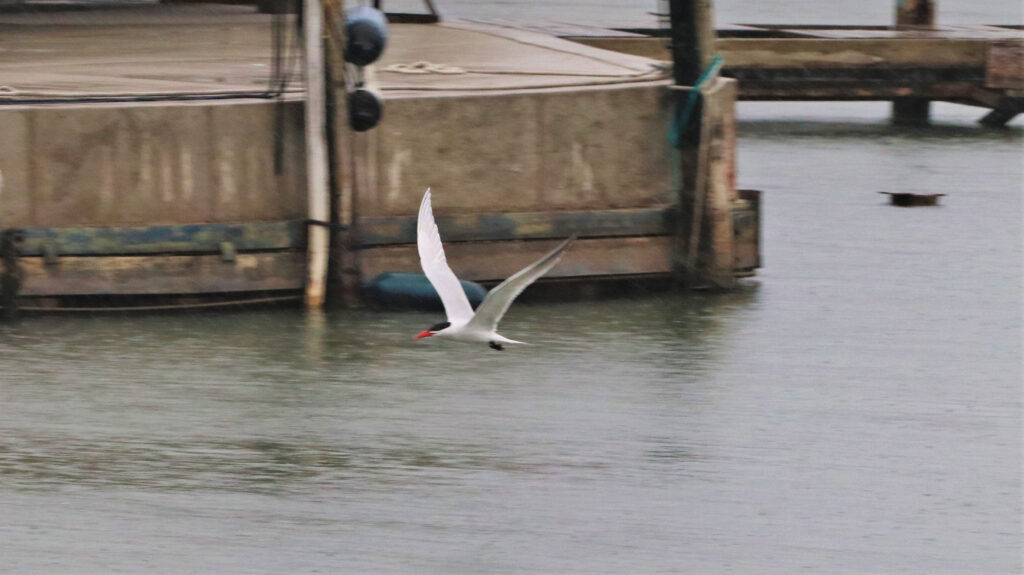
After seeing these birds and doing some research, I went back to see if I could see them again but could not find them anywhere. This was a bit of a disappointment as I wanted to capture a few more pictures.
The next day, however, another Kenosha area photographer messaged me to ask if I knew what kind of birds she had captured in her photos. The picture was of a large flock of terns on the Simmons Island beach near the pier. I told her that they were common terns due to having just researched them from the river pictures. She stated that she thought they were Caspian terns after doing her research, too.
I then decided to go look for them myself and I’m definitely glad I did. These terns were much larger than the terns I had originally seen. These Caspian terns were in many cases as large as the gulls they were loitering on the beach with. I watched them for some time and was able capture more images of them. I counted 20 of them on the beach, but there were more flying around which made them hard to count.
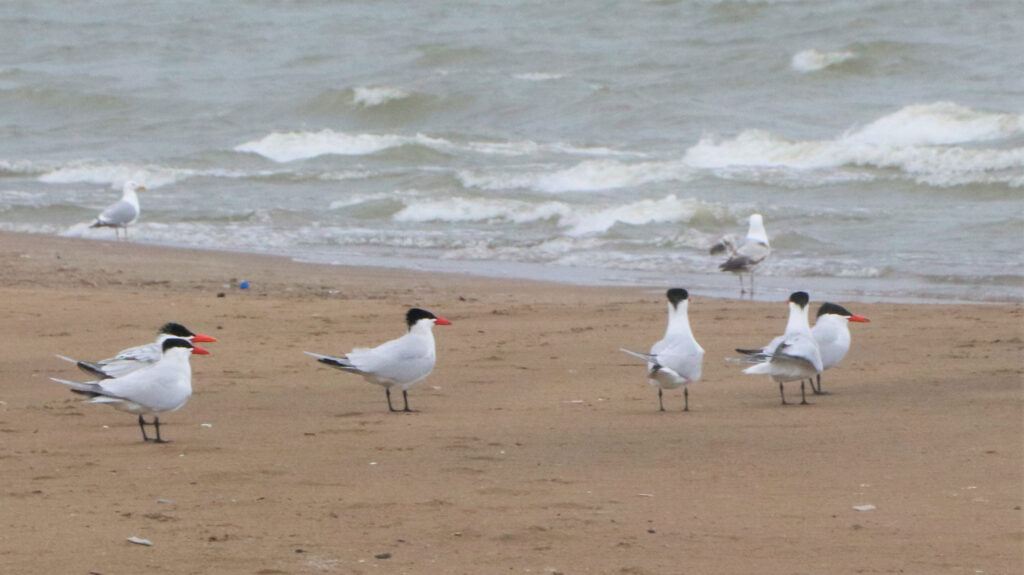
I went back again over the weekend and discovered that they were no longer present on the beach, so I suppose they just made Kenosha a stop over to rest on their way north to breed.
Maybe they’ll return again to Kenosha.
So, the next time you think you’re seeing seagulls, maybe look a little closer for the black caps on their heads. They may just be an endangered tern.
